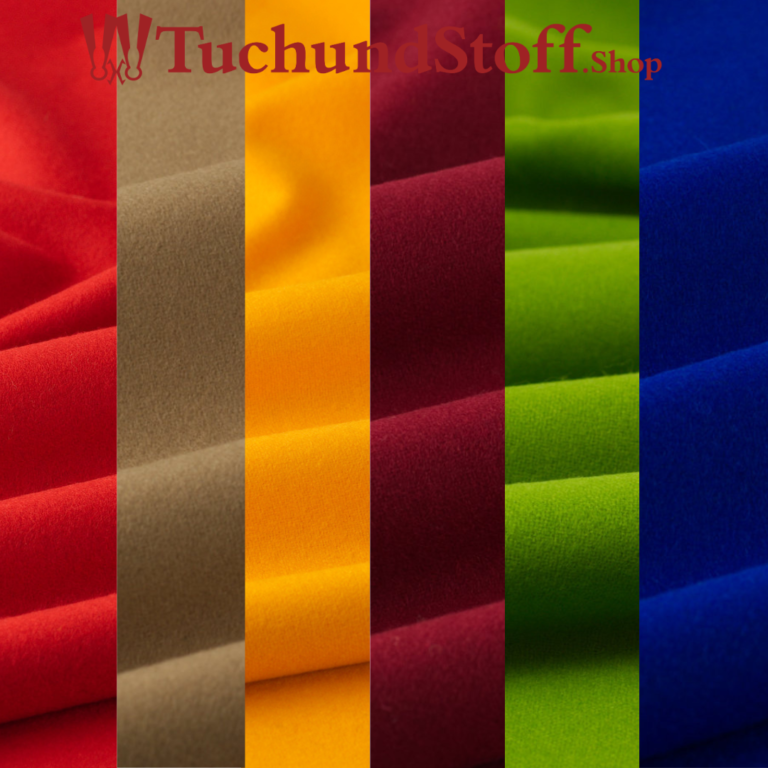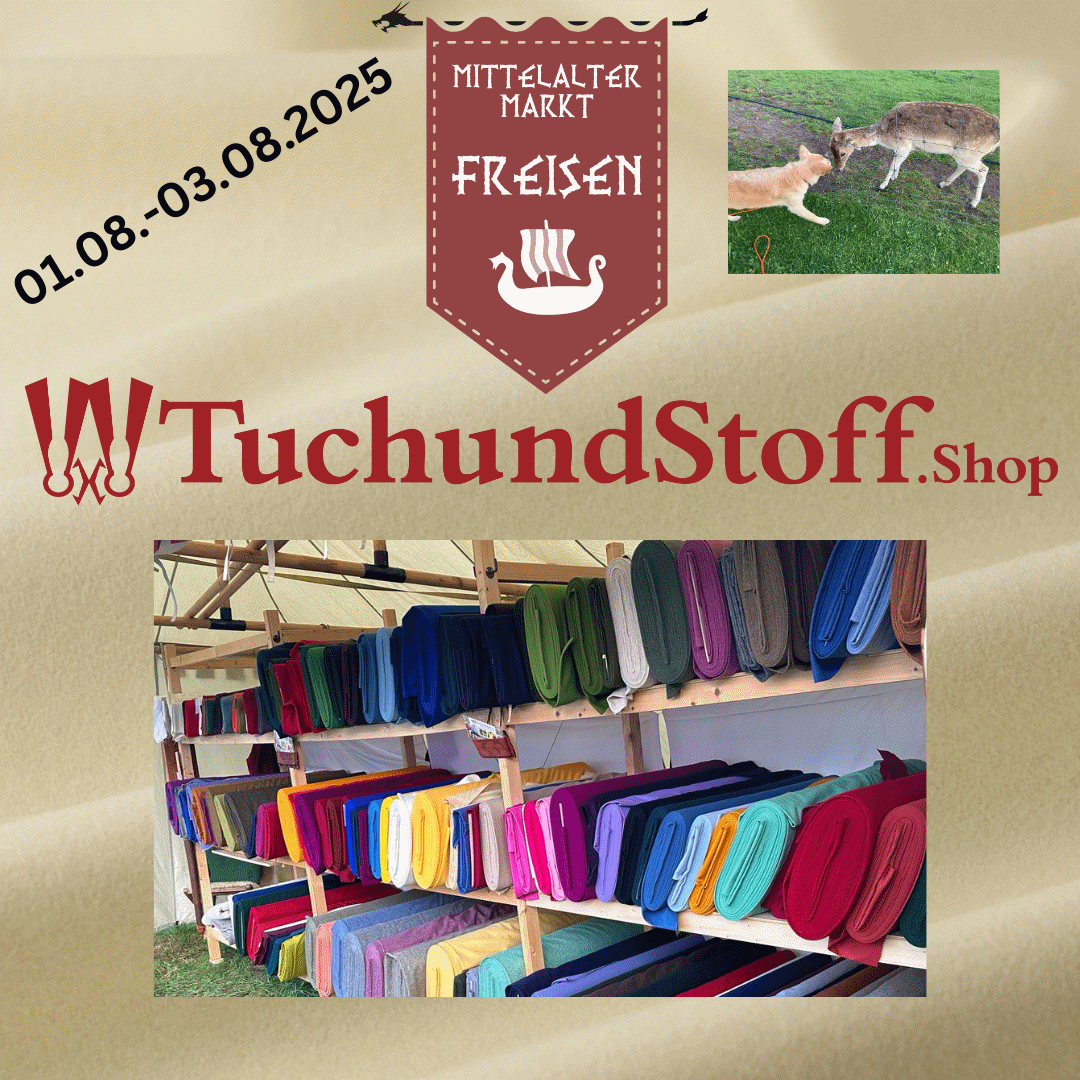Buying advice – All about good cloth
It is often not easy for the layman to judge the quality of a fabric. Unfortunately, a beautiful color says nothing about the quality of the fabric. Defects are often only recognized during processing or when worn later. So what is “good fabric”? And which is the right one for my project? Here we provide valuable tips to help you make the right choice:
The quality of fabric results from the raw materials used, the tools and techniques available and the ability of the workforce to produce consistently high quality workmanship. That’s how it was in the Middle Ages and how it is today.
Above all, however, “good fabric” must meet the requirements of the wearer and the purpose it serves.
In addition to the basic quality, it is also about the respective application, i.e. what is to become of it. More on this in the topics below.
What is cloth and what is fabric?
In German, textiles for clothing are generally also referred to as fabrics. Textiles for certain applications are colloquially referred to as cloth: Towel, scarf, tea towel, handkerchief, etc., whereby the type of fabric depends on the respective application.
Cloth in the classical sense is a refined fabric made of wool. In earlier centuries, the manufacture of clothing was divided into a large number of professions: Spinners, weavers, dyers, walkers, shearers, seamstresses and even clothiers. The latter was responsible for finishing the wool woven in plain weave (also known as cloth weave), initially by multiple fulling. The wool is pressed together so that the individual hairs felt together, making the fabric windproof and preventing it from fraying at the edges when tightly woven. The fabric only becomes a fine cloth through shearing, where protruding fiber ends (the pile) are cut off to create an even surface that is water-repellent thanks to the lotus effect. Finished in this way, the cloth is suitable for a wide range of demanding applications.
Natural purity
For all those who attach importance to the greatest possible authenticity of their representation, the first basic requirement is that the fabric of their garment does not contain any synthetic fibers. This is often where the problems with procurement begin, as most of the fabrics on offer in normal fabric shops are at least partly made of synthetic fibers. In normal life, this is not necessarily a bad thing, as it can have a positive effect on wear, care and visual properties. In the context of historical depictions, however, this is not desirable; nobody needs burn holes around the campfire. That is why all the fabrics we offer are free of synthetics.
The acid test
You can easily check whether a fabric is naturally pure by carrying out a fire test. Light a small cut-out piece of fabric with a lighter, let it burn briefly and extinguish it again. Pure wool smells of burnt hair, and small balls of ash can easily be rubbed between your fingers. Pure linen smells of burnt paper, the ash can also be easily rubbed together. If the fabric contains synthetic components, it smells of plastic and small, solid pellets remain.
However, the absence of synthetic fibers is only a basic requirement. Many factors are decisive for the quality!
Is it worth spending a little more?
Quality has its price – but it’s worth it! High-quality fabrics are not only more durable and long-lasting than fabrics that have been skimped on, they are also more comfortable and pleasant to wear. They are softer, have better breathability and are less susceptible to stains and damage. High-quality fabrics are also generally more color-fast and less sensitive to light and heat.
Caution: 330 = 220! Running meters versus square meters
We generally state the weight of our fabrics in running meters (rm). However, the fabric weight can also be stated in square meters (m²). A fabric with a width of 150 cm logically weighs exactly the same at 330g per running meter as it does at 220g per square meter. So be careful when comparing fabrics! To be on the safe side, we state both values in the product details.
The coat/cloak: Thick equals warm?

Customers often ask us for a fabric for a warm coat and are looking for the thickest possible wool fabric. You can do that. But the main purpose of a coat or cloak is to keep the weather at bay. If wind and rain stay outside, that’s half the battle for a warm and cozy climate inside the garment.
The other half is provided by many layers that are worn next to the skin, whereby the bottom layer should be as close-fitting as possible. The body heats the air between the various layers and this creates the cozy warmth that we love outdoors, but which quickly becomes too much for us in closed, heated rooms.
But back to the coat fabric. How can fabric keep out wind and water? A simply woven wool fabric can do this due to its thickness, but only up to a certain point. Even if it is tightly woven, wind passes through it at a certain strength and blows away the warm air underneath. Water remains outside for the time being, but seeps through over time and you get wet.

The best remedy is a cloth loden made of pure new wool; this is spun and woven, after which the resulting woolen fabric is made windproof by the process of multiple fulling. The wool is pressed together so that the individual hairs are matted together. The fabric is then made into a fine cloth by shearing, which involves cutting off protruding fiber ends (the pile) to create an even surface that is water-repellent thanks to the lotus effect.
Finished in this way, the cloth loden is wind and waterproof without having to be too thick, as its density achieves the desired effect better and for longer. Of course, there are also thick cloth loden fabrics, because in the end it is the requirements that count. A forester who has to work in the forest for eight hours or more in the rain and cold has to make the highest demands (=heavy loden cloth). A reenactor who sits around a cozy campfire after four hours of battle has medium (= medium-heavy) requirements; anyone who wants to go for an hour’s walk in the rain will be happy with medium-light cloth loden.
So much for the facts. Personal preferences are, of course, a matter of taste that everyone decides for themselves!
Cloth or loden?
Cloth or loden? The main difference is that a loden is always mottled, whereby the raw wool is dyed in different colors before spinning. Only then is the loden woven. The wool for the cloth is first woven and then dyed. From then on, the processing is the same. Both become cloth by weaving in plain (or cloth) weave, fulling and shearing. They are used in the same way with the same weight.
Woolwalk, Walkloden & Co.
Oh, these unspeakable, often misused and misunderstood terms! First of all, the term “fulling fabric” or “fulling” only means that a fabric has been fulled, i.e. subjected to the fulling process. It says nothing about the quality, e.g. whether it has been carefully or carelessly fulled, not even whether it is a woven or knitted fabric. Even Wikipedia provides undifferentiated and sometimes incorrect information here.
Traditionally, fulling involves beating the fabric with hammers under running water, which felts the wool fibers and compacts the fabric. In the High Middle Ages, there were specialized fulling mills. The process is an important part of the production of high-quality cloth and cloth loden, but even simple woolen fabrics often acquire a certain density through fulling. Therefore, extreme caution is required, as fabrics are often sold as fulling fabric, woolen cloth or fulling loden. It is highly likely that these are knitted fabrics, which cannot be compared with woven cloth or cloth loden.
Does a fabric fall apart when sewing? Does it freeze and get wet? Does the fabric warp during washing? Is the garment you invested so much time and effort in worn out after just a short period of wear and the joy of the supposedly cheap fabric price turns into frustration? It’s very likely that you’re dealing with wool or fuller’s loden.
TuchundStoff club and group lists
Do you know which fabrics are suitable and want to help your members choose so that a new garment fits the time, place and status of your presentation? TuchundStoff will help you!
It’s as simple as that: You select the suitable fabrics in our store and send us a list with the article numbers together with a desired password. We will store the fabrics you have selected with your password, which can then simply be entered in the search field of our WebShop to display the list of your fabrics for your members.



